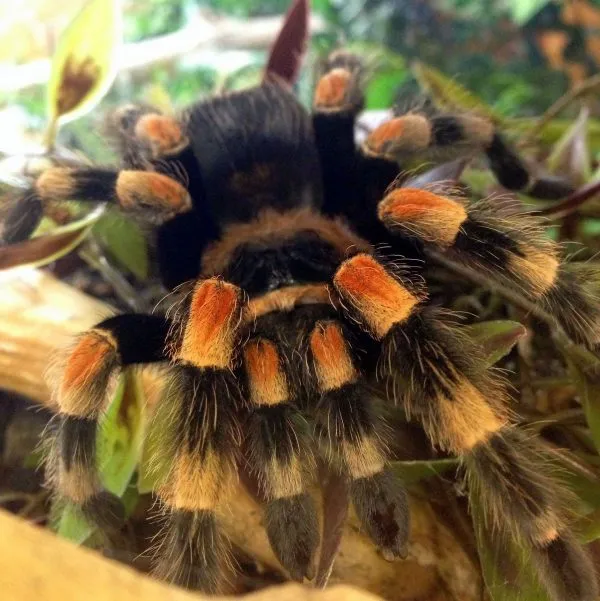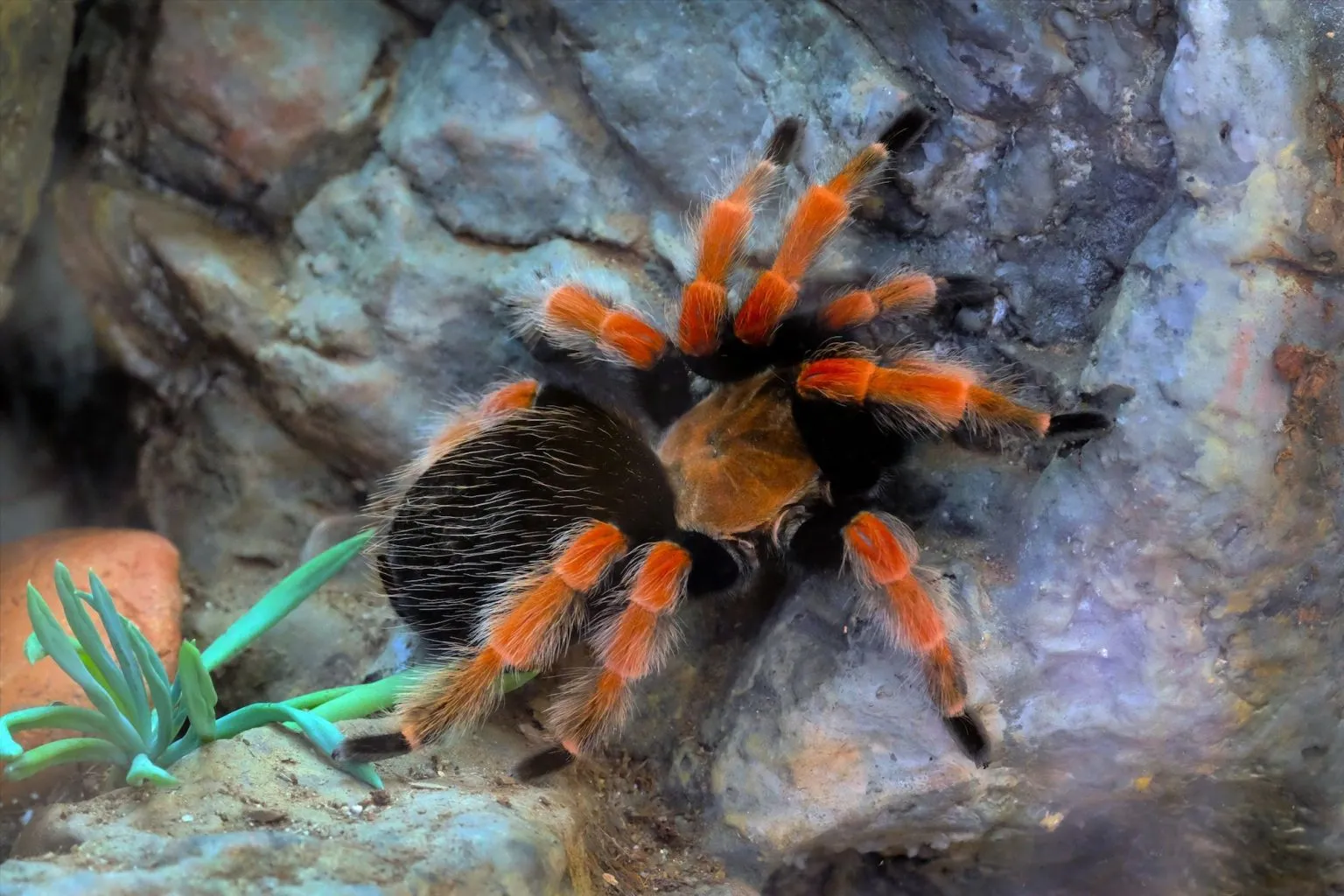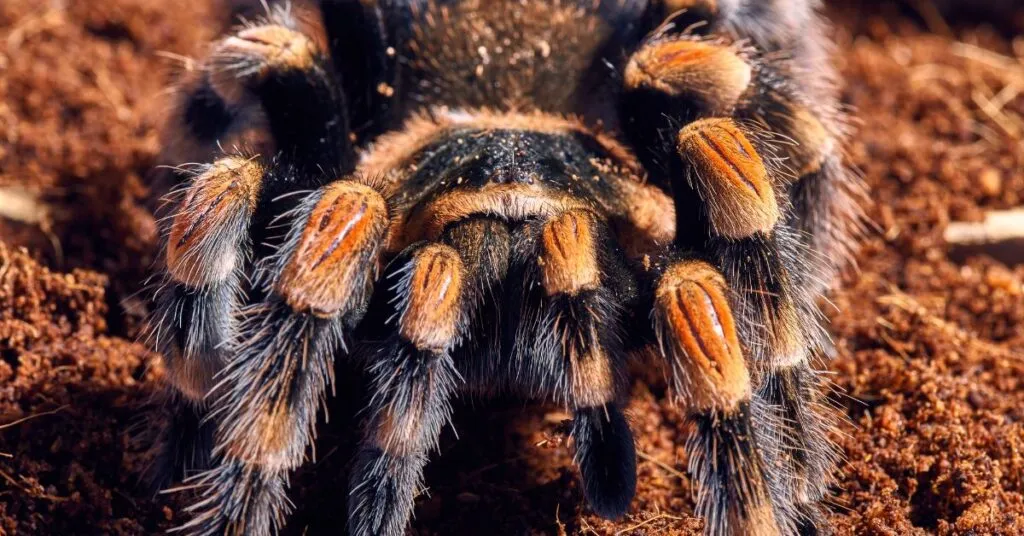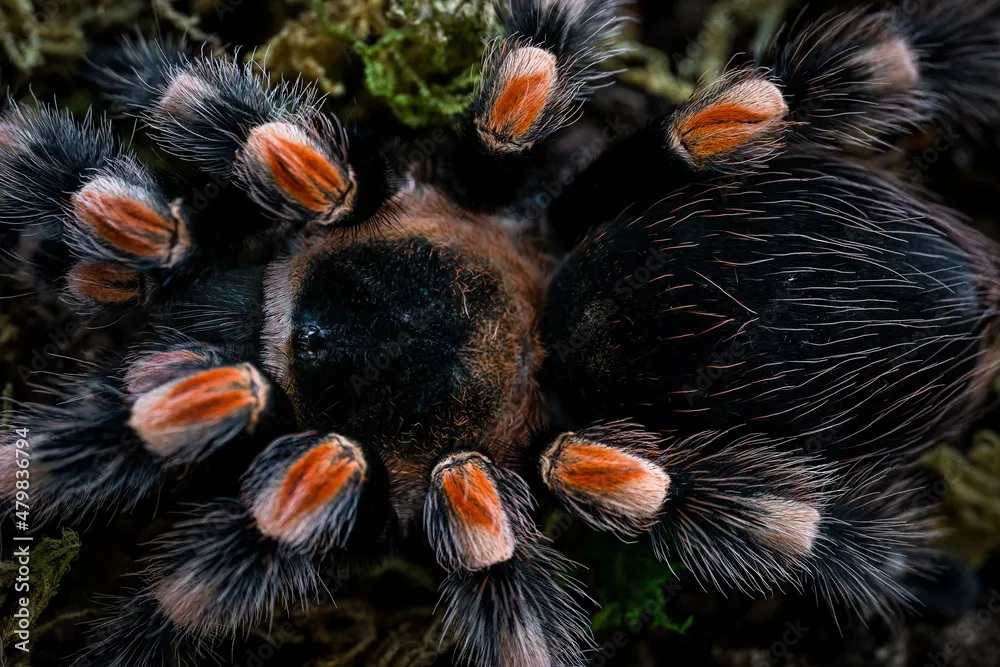Mexican Rose Tarantula: 7 Essential Care Tips
The Mexican Rose Tarantula, Grammostola rosea, is a popular choice for beginner tarantula keepers due to its docile nature and relatively simple care requirements. These captivating creatures, native to the deserts of Mexico, Chile, and Argentina, are known for their striking appearance and gentle disposition. Providing the right environment and care is crucial for their well-being. This guide will provide the most essential tips, covering everything from housing and feeding to health and handling, ensuring your Mexican Rose Tarantula thrives. Proper care not only promotes a long and healthy life for your tarantula but also allows you to enjoy the unique experience of observing these fascinating invertebrates. Whether you’re a first-time tarantula owner or looking to refine your care techniques, these tips will serve as a valuable resource for keeping your Mexican Rose Tarantula happy and healthy.
Choosing the Right Enclosure
Selecting the right enclosure is the first and arguably most important step in caring for your Mexican Rose Tarantula. A suitable habitat provides a secure and comfortable environment, essential for their physical and psychological well-being. The enclosure should be appropriately sized, allowing ample space for the tarantula to move around while also preventing it from feeling overwhelmed. Consider the tarantula’s adult size when choosing an enclosure, as they can grow to be quite large. The enclosure should also be escape-proof, with a secure lid and no gaps or openings. Proper ventilation is another crucial factor. The enclosure should allow for adequate airflow to prevent the buildup of stale air and the growth of mold or fungus, but it should not be so airy that it compromises the humidity levels. Finally, the material of the enclosure is important; glass or clear plastic are common choices, allowing for easy viewing of your pet. Regular monitoring and maintenance are vital to the tarantula’s health and happiness.
Enclosure Size and Ventilation

The size of the enclosure directly impacts your tarantula’s quality of life. A good rule of thumb is to provide an enclosure that is at least three times the tarantula’s leg span in width and length, while the height doesn’t need to be excessive. This ensures enough room for movement and exploration. Ventilation is equally important. The enclosure must have cross-ventilation to allow fresh air to circulate and prevent stagnant, humid conditions that can promote mold growth. This is typically achieved through a combination of ventilation holes in the top and sides of the enclosure. Avoid enclosures with excessive ventilation, as this can make it difficult to maintain the necessary humidity levels. A well-ventilated enclosure creates a healthy environment, improving the tarantula’s well-being and reduce the risk of respiratory issues and fungal infections. The size and ventilation must be appropriately balanced to ensure the best possible conditions for your Mexican Rose Tarantula.
Substrate Selection
The substrate, or bedding, is a crucial component of the enclosure, serving multiple purposes. It provides a comfortable surface for the tarantula to walk on, burrow in, and creates the necessary humidity levels. The ideal substrate should be absorbent, non-toxic, and able to retain moisture. A mix of peat moss, coconut fiber (coco coir), and a small amount of vermiculite is often recommended. Peat moss and coco coir retain moisture well, while vermiculite helps to regulate humidity. The substrate should be deep enough to allow the tarantula to burrow, which is a natural behavior, offering a sense of security. Avoid substrates like cedar or pine shavings, as they contain oils that can be harmful to tarantulas. Changing the substrate regularly is essential to prevent the buildup of waste and maintain a healthy environment. The substrate’s quality and proper maintenance are indispensable for the overall health of your Mexican Rose Tarantula.
Maintaining Proper Humidity
Maintaining the correct humidity levels is vital for the health of your Mexican Rose Tarantula. These tarantulas thrive in a relatively dry environment, with humidity levels generally between 60% and 70%. Monitoring the humidity is key; a hygrometer, or humidity gauge, is a valuable tool. To maintain the desired humidity, lightly mist the enclosure with dechlorinated water every few days, or as needed, depending on the ventilation and substrate used. Avoid over-misting, which can lead to excessive humidity and mold growth. Ensuring the substrate remains slightly moist but not soaking wet, is the right balance. The use of a water dish can also contribute to humidity levels. Proper humidity supports the tarantula’s molting process and overall well-being. Careful monitoring and adjustment are essential to ensuring your Mexican Rose Tarantula’s health.
Watering Your Tarantula

Providing a clean water source is critical for your Mexican Rose Tarantula. A shallow water dish should be available at all times, offering a safe place for the tarantula to drink. The dish should be small enough to prevent the tarantula from drowning and easy to access. Regularly refresh the water, at least every other day, to keep it clean and prevent bacterial growth. Avoid using tap water unless you have a water conditioner to remove chlorine and chloramine, as these chemicals can be harmful to tarantulas. Bottled or filtered water is a safer option. Observe your tarantula to ensure it’s drinking from the water dish. The water dish offers a vital resource, ensuring your Mexican Rose Tarantula stays hydrated and healthy.
Providing a Balanced Diet
Mexican Rose Tarantulas are primarily insectivores. A balanced diet should consist mainly of appropriately sized insects, such as crickets, mealworms, and roaches. The size of the prey should be proportionate to the tarantula’s size, generally no larger than the tarantula’s body. Ensure the prey insects are gut-loaded, meaning they have been fed nutritious food, before offering them to your tarantula. Gut-loading the insects provides additional vitamins and nutrients for your tarantula. Variety in the diet is also essential; offering different types of insects will help to ensure a complete range of nutrients. Avoid overfeeding; juveniles should be fed more frequently, while adults may only need to be fed once or twice a week. Always remove any uneaten prey insects from the enclosure, as they can stress the tarantula and potentially injure it during molting. A well-balanced diet contributes significantly to the health, growth, and vitality of your Mexican Rose Tarantula.
Feeding Frequency and Prey Selection
The feeding frequency depends on the tarantula’s age and size. Spiderlings and juveniles require more frequent feedings, typically every other day, while adult tarantulas can be fed once or twice a week. Monitor your tarantula’s abdomen; a healthy tarantula will have a plump abdomen after feeding. As they approach molting, they may refuse food, which is normal. Offering the right prey is crucial. Crickets are a common choice, but ensure they are gut-loaded with nutritious food. Mealworms are also suitable, but may need to be pre-killed for smaller tarantulas. Roaches, like Dubia roaches, are another excellent option, providing a good source of protein. Avoid feeding wild-caught insects, as they may carry parasites or pesticides. The size of the prey is also vital. It should be smaller than the tarantula’s body to avoid any potential injury. A well-managed feeding routine and appropriate prey selection are essential for the well-being of your Mexican Rose Tarantula.
Temperature Control

Mexican Rose Tarantulas thrive in a temperature range of 75-85°F (24-29°C). Maintaining this temperature range is crucial for their metabolism and overall health. Usually, the ambient room temperature is sufficient. However, in colder climates, a heat source may be necessary. Use a heat mat placed on the side of the enclosure, never directly under it, to prevent overheating. A thermostat should be used with the heat mat to regulate the temperature and prevent any danger. Avoid using heat lamps, as they can dry out the enclosure and are not necessary for this species. Regular monitoring of the temperature is also important, using a thermometer to ensure the enclosure stays within the ideal range. The proper temperature will help the tarantula to digest its food and maintain an active lifestyle, ensuring the well-being of your Mexican Rose Tarantula.
Handling and Safety Precautions
While Mexican Rose Tarantulas are generally docile, handling should be kept to a minimum. Tarantulas can be easily injured if they fall or are dropped. Excessive handling can also stress the tarantula. If you choose to handle your tarantula, do so with extreme caution, and always sit or stand close to the ground to minimize the risk of a fall. Be aware of the tarantula’s behavior; if it appears agitated, it may be best to leave it alone. Tarantulas also have urticating hairs, which can cause irritation if they come into contact with the skin. Avoid touching the tarantula’s abdomen, where these hairs are located. Always wash your hands thoroughly after handling your tarantula or cleaning its enclosure. The safety of both you and your tarantula is paramount. Respecting the animal’s space and understanding its behavior ensures a positive and safe experience for everyone. Handling should be done only when necessary.
Recognizing and Addressing Health Issues
Observing your Mexican Rose Tarantula for any signs of illness is crucial for their health. Look out for changes in behavior, such as lethargy or lack of appetite. If the tarantula is consistently refusing food or appears weak, it may be a sign of a health issue. Check the tarantula’s abdomen for any unusual swelling or discoloration. Problems with molting are also common; if the tarantula struggles to molt or the molt is incomplete, it may indicate a problem with the environment or the tarantula’s health. In such cases, provide extra humidity and ensure the temperature is correct. If you suspect your tarantula is ill, consult with an experienced tarantula keeper or a veterinarian specializing in exotic animals. Early intervention can make a significant difference in the outcome. Regular observation and attention to your tarantula’s health are key to ensuring its long-term well-being and happiness.
Conclusion

Caring for a Mexican Rose Tarantula can be a rewarding experience. By following these 7 essential care tips, you can create a comfortable and enriching environment for your pet. Remember that proper housing, temperature, humidity, diet, and careful handling are essential for the health and longevity of your tarantula. Regular observation and a proactive approach to health issues are crucial for ensuring a happy and healthy pet. Enjoy the fascinating world of your Mexican Rose Tarantula, and appreciate the unique companionship of these captivating creatures. With the right care and attention, your tarantula will thrive, providing you with years of enjoyment and the opportunity to learn about these amazing animals.
